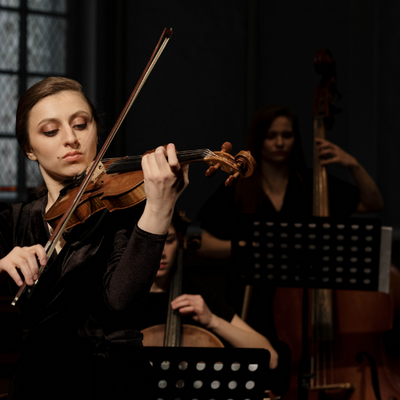The Baroque Era: The Birth of the Violin

The origins of the violin can be traced back to the early 16th century in Italy. During the Baroque period, the violin began to take shape, distinct from its predecessors such as the medieval fiddle and the Renaissance viol. The early Baroque violins were constructed with a shorter fingerboard and a flatter bridge, which produced a softer and more intimate sound. This period also saw the rise of prominent violin makers such as Andrea Amati and Antonio Stradivari, whose instruments are still revered today for their superior craftsmanship and tonal quality.
As the Baroque era progressed, the violin became increasingly prominent in both solo and ensemble settings. Composers like Antonio Vivaldi and Johann Sebastian Bach composed intricate pieces that showcased the violin's expressive capabilities. The instrument's design also evolved, with makers lengthening the fingerboard and adjusting the curvature of the bridge to enhance the instrument's range and projection.
The Classical Era: Transformation and Innovation

The transition from the Baroque to the Classical period brought further changes to the violin. In the 18th century, the violin's neck was angled back slightly, and the fingerboard was extended to allow for higher positions. These modifications enabled violinists to play more virtuosic passages, aligning with the stylistic demands of the Classical repertoire. Composers such as Wolfgang Amadeus Mozart and Ludwig van Beethoven wrote concertos and chamber music that highlighted the violin's lyrical and technical potential.
The Romantic Era: Refinement and Expansion

The 19th century marked a significant period of innovation and standardization for the violin. During the Romantic era, the instrument's design was refined to produce a more powerful and focused sound, suitable for larger concert halls and orchestras. The introduction of metal strings in the late 19th century replaced the traditional gut strings, offering greater durability and volume. This period also saw the development of advanced bowing techniques, pioneered by virtuosos like Niccolò Paganini, whose performances pushed the boundaries of violin playing.
The Modern Era: Continued Evolution
 Maison La Pergola Luthier’s Workshop
Maison La Pergola Luthier’s WorkshopIn the 20th century, the violin continued to evolve, both in terms of construction and performance practice. Modern luthiers experimented with different materials and technologies to enhance the instrument's acoustic properties. The advent of electric violins and amplification systems opened new possibilities for violinists, allowing the instrument to be featured in a diverse range of musical genres, from classical to jazz and rock. This era saw the violin transcend traditional boundaries, becoming an integral part of contemporary music landscapes.
Today, the violin remains a cornerstone of Western music, cherished by musicians and audiences alike. Its evolution from the Baroque to modern times reflects a journey of continuous innovation and artistic exploration. The violin's rich history serves as a testament to the enduring appeal of string instruments and their ability to adapt and thrive in an ever-changing musical landscape.
For music students, educators, and enthusiasts, delving into the history of the violin offers valuable insights into the instrument's development and its role in shaping musical traditions. Whether playing a Baroque sonata, a Romantic concerto, or a contemporary piece, violinists carry forward a legacy of craftsmanship, artistry, and passion that spans centuries. The story of the violin is not just about an instrument, but about the evolution of music itself.
If you are looking for modern string instruments, our collection includes traditional acoustic violins sourced from renowned luthiers who continue the tradition of innovation and excellence in violin making. Click here for our catalogue of instruments.
For music students in Singapore, we provide not only high-quality instruments but also the guidance and support needed to explore the full potential of the violin. Our range of accessories, from bows to cases, ensures that every aspect of your playing experience is catered for with the utmost care and expertise.
Schools and educators can also rely on us to supply violins and related equipment in bulk, ensuring that their music departments are equipped with the best tools for nurturing the next generation of musicians. We are committed to supporting the musical journeys of students and professionals alike, helping them to appreciate and contribute to the violin's ongoing evolution.
The modern violin, with its rich history and continuous development, is a symbol of the dynamic nature of music. We are proud to be part of this story, providing instruments and expertise that inspire and sustain the musical passions of our community.





















